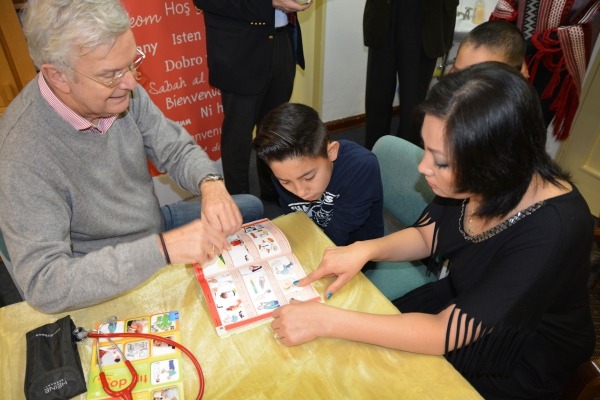
Doctor-patient conversation in pictures
Support association supports the Stadtbibliothek Bremen for refugees
Is the pain stabbing or dull? When does the pain occur? Patients often find it difficult to answer such questions when asked by their doctor. It becomes even more difficult if you have to answer them not in your own native language, but in a foreign language. Many newcomers to Bremen are currently facing this challenge. That's why the Stadtbibliothek Bremen Stadtbibliothek association decided to support this too, this time with so-called “tip doc” books. They contain typical situations of doctor-patient conversations, presented in simple images with subtitles and appropriate translations. On Friday, December 11th, Rainer Kulenkampff and Matthias Pfeiffer from the board of the Friends' Association presented the books to the head of the Vegesack refugee accommodation, Assal Moghaddam, in the presence of library director Barbara Lison and Martin Renz (head of the Bremen district library).
All transitional housing facilities that already use a media box from the Stadtbibliothek Bremen will receive copies in the languages Arabic-French, Farsi-English and Serbian-Italian in the next few weeks - each in combination with German. In the spring, the Stadtbibliothek Bremen will make additional media boxes available, which will already contain the “tip doc” books. “The Stadtbibliothek not only has fiction in many languages, but of course also wants to provide support in everyday life,” emphasized Barbara Lison, director of the Stadtbibliothek Bremen . Rainer Kulenkampff and Matthias Pfeiffer from the board of the Association of Friends also know that this support can be a little more specific for refugees and are pleased to be able to “provide information about such books and thus address the burning political questions in a very practical way.”
Dr. Cristian Deetz, a retired pediatrician, visits the ASB transitional living facility in Vegesack on the handover date. He tries out the “tip doc” book with resident Lina Amini and her sons. Amini comes from Afghanistan and speaks Farsi. Since she has only been in Bremen for a short time, she does not yet understand or speak German. She opens the book with the language combination English-German-Farsi and points to a picture showing a child with severe stomach pain. Dr. Deetz reads the subtitle of the picture: “Cramps”. Based on further pictures, Dr. Deetz asked whether her son Iman (13 years old) also had a fever or was vomiting. He examines Iman and then uses the pictures in the book to show his recommended treatment and that Iman should drink a lot of tea. “The book doesn’t replace an interpreter, but the idea is really good!” says Dr. Deetz had his first treatment consultation with tip doc. An interpreter is still important because even the best book cannot cover all individual cases. But Lina Amini is very satisfied: With the help of the pictures she can describe the symptoms very well and feels more independent than if she were completely dependent on an interpreter. “As with all dictionaries, you have to practice using them beforehand and deal with the structure of the chapters,” says Martin Renz, head of the Vegesack Stadtbibliothek , describing the challenges of tip-docs. That's why Assal Moghaddam, head of the refugee accommodation, would like more medical practices to buy and use these books - so doctors and patients could overcome language barriers together.
November 14, 2015
